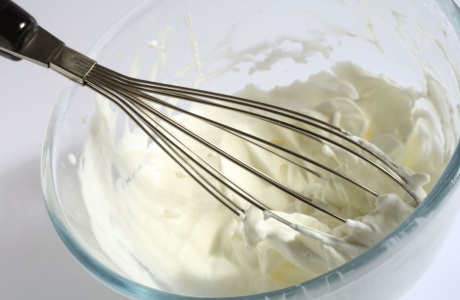When you think of heavy cream, you usually think of whipped cream, but it has a lot more uses as an ingredient. Because heavy cream contains at least 36% milkfat, it may produce soft peaks (by comparison, whole milk has about 3.25 percent milkfat).
As a dairy product, heavy cream contains some nutrients, such as protein, vitamins A and D, and minerals like calcium and phosphorus. However, in order to receive any significant nutritional advantage, you’d have to eat a lot of it, which is prohibitive due to the calorie burden.
Instead, consider heavy cream as a strategic component that may enhance the flavour of healthy meals and snacks. Add a splash to soups or sauces, a tablespoon to eggs for a fluffy scramble, a teaspoon to coffee or tea, or a spoonful to mashed sweet potatoes to enrich them. Of course, a tablespoon whisked over top of fruit makes for a delectable, sugar-free dessert.
Heavy Cream Nutrition Facts
Carbs
Heavy cream, like other dairy products, is low in carbs, however it does include a small amount of lactose, a naturally occurring sugar. Given that you’re unlikely to consume a big amount of cream in one sitting, 2 tablespoons (equal to 1/4 cup whipped cream) has slightly under a gramme (0.9g) of carbohydrates.
Fats
2 tablespoons of heavy cream contain approximately 11 grammes (10.8 grammes) of fat. It’s primarily saturated fat (6.9g), with a tiny amount of monounsaturated (2.7g) and polyunsaturated (0.1g) (0.5g).
Protein
Heavy cream, like other dairy products, includes protein; nevertheless, it is not an excellent source of protein when compared to other dairy products, such as yoghurt, which has more protein for the same number of calories. The protein content of two tablespoons of heavy cream is little under a gramme (0.9g).
Vitamins and Minerals
Heavy cream does include micronutrients that can help with health, such as vitamins A and D and minerals like calcium, potassium, and phosphorus, but you’d have to eat a lot of it to obtain substantial levels of any of them. Because vitamins A and D are fat soluble, and heavy cream contains a lot of fat, your body is more likely to absorb them.
Calories
A cup of heavy cream has around 800 calories in it, although it’s doubtful that someone would drink that much in one sitting. One tablespoon, which is a more typical serving size, has about 51 calories.
Health Benefits
Heavy cream has certain nutritional advantages in the form of protein, fat, and micronutrients, but it is best known for making other nutritious foods more appealing and filling. A cup of tomato soup, for example, is tasty and healthful, but when you add a tablespoon of heavy cream to it, it becomes much more decadent and satisfying. In addition, the fat in heavy cream makes the vitamins A, E, and K in the soup more accessible.
Allergies
Heavy cream should not be consumed by anyone who has a dairy allergy. Dairy allergies can cause vomiting or other digestive issues, as well as wheezing or rashes, and can be moderate or severe.
Heavy cream should also be avoided by people who are lactose intolerant. Lactose intolerance is a condition in which the body is unable to digest lactose, a sugar found in milk and other dairy products. Lactose intolerance occurs when a person lacks the lactase enzyme, or not enough of it, to break down lactose, resulting in bloating, gas, and diarrhoea.
Storage and Food Safety
If properly stored, heavy cream will stay in the refrigerator for approximately a week after it has been opened. To keep heavy cream and other dairy products as cold as possible, place them on a lower shelf near the back of the fridge. Heavy cream and other dairy should not be kept in the refrigerator door, as this is where the temperature swings the greatest.
If your heavy cream has a foul odor or has gotten quite lumpy, it’s probably gone bad.



